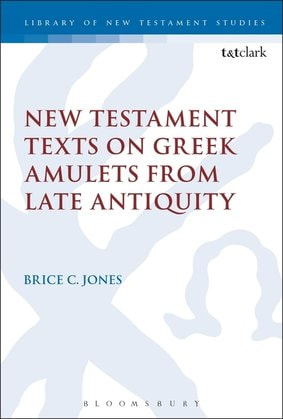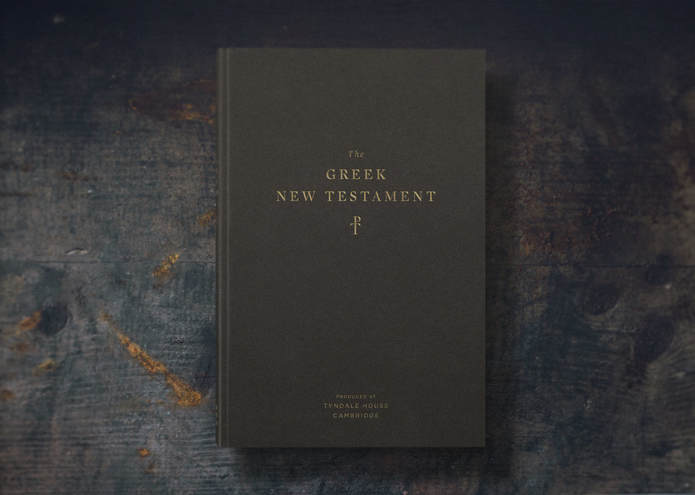|
The Greek New Testament, Produced at Tyndale House, Cambridge. Wheaton: Crossway, 2017. Hardcover. 540 pp. $39.99
I would like to express my utmost appreciation to the kind folks at Crossway for sending me a review copy of this book. This edition of the Greek New Testament (hereafter, THGNT) represents the work of a group of scholars associated with Tyndale House, Cambridge, “a study centre focusing on advancing understanding of the Bible.” Dirk Jongkind is named the primary Editor of the edition, with Peter J. Williams as Associate Editor, and Peter M. Head and Patrick James as Assisting Editors. According to the acknowledgements, this edition has been in the works for some time, with initial conversations having begun in 2005 at Tyndale House. The edition has an attractive, dedicated website, which includes an introduction, endorsements, FAQs, and other information. It appears that the website will eventually host a free, digital version of the edition that will include morphological information, parsings, an ESV interlinear rendering, and much more. This will be a real convenience for users who want to access the edition “on the go.” Hopefully, the online edition will be user-friendly. According to the introduction (which is located in the back of the volume), the text of THGNT is a major revision of the 19th century edition of the Greek New Testament produced by Samuel Tregelles. The editors note that Tregelles’ text was used as a starting point partly because it has been “undeservedly ignored” (p. 505). The editors chose not to bring versional or patristic testimony into consideration because, according to the editors, “we have not felt that at any point their witness was strong enough to change the decisions we made on the basis of the Greek manuscripts” (p. 507). Yet, in the FAQ document on the THGNT website, the editors highlight the “improvements in the accuracy with which we can use early versions.” The statements seem inconsistent. THGNT also excludes later witnesses, with an emphasis on the most ancient testimony throughout the text. Some will likely criticize this approach, since the best reading is not necessarily always found in the earliest witnesses, which the editors readily admit on p. 507. In these (and other) ways, THGNT is quite different in editorial approach than the Nestle-Aland edition produced by the Institut für Neutestamentliche Textforschung in Münster, which has been the standard scholarly edition of the Greek New Testament for decades. There are several other major changes that set this edition apart. Perhaps most significant is a change in the ordering of books. While preparing for this review, I was interested in viewing a passage in James but quickly realized that James was not in the place it usually is. Uniquely, THGNT presents books in the following order: Gospel, Acts, Catholic Epistles, Pauline Corpus, and Revelation. The reason for doing this is a historical one: it reflects the order of books as found in many ancient manuscripts. This is not necessarily a bad thing, because it is historically justified. However, it does break from the norm and will require some familiarization. Another major change is the paragraphing, which is influenced by what is found in manuscripts, particularly those from the fifth century or earlier. Ekthesis, used by ancient scribes of literary texts, is also employed in THGNT to mark new paragraphs, which is basically the opposite of “indention.” The editors admit that this way of paragraphing is different from what is followed today but that there is an “inner logic when studied more closely” (p. 512). There are other decisions for which the editors rely on ancient manuscripts and the study of scribal habits (e.g., spelling, accentuation of Semitic names, breathings, enclitics, punctuation). While these decisions are not inherently wrong, the changes will require some familiarization. An understanding of the reasoning behind these changes is likely to be found in the textual commentary that is to be published subsequent to the edition (p. 506). The textual apparatus is very limited. Manuscripts that support the main text are listed first (i.e., it is a positive apparatus). The choice of variants consists of three main categories (p. 515):
After the introduction, there is a table of “witnesses” consisting of 130 manuscripts cited in the apparatus, followed by a list of other manuscripts consulted in the preparation of the edition. A few, small observations:
Conclusion I applaud the editors for producing a new edition of the Greek New Testament. No doubt an immense amount of work went into its production—a daunting task. Like the SBL Greek New Testament edited by Michael Holmes, this hand edition offers an alternative to the Nestle-Aland edition. I do not foresee THGNT replacing the Nestle-Aland edition; and the extent to which it will be used in the field is yet to be determined. But, it is an edition to be considered, especially given some of its unique characteristics, some of which I have highlighted above. Although a book should never be judged by its cover, I must say the book is bound very nicely, comes in a protective box, and the Greek font is very pleasing to the eye. The printing quality is also excellent: the pages are thick, the text is bold and clean. A staurogram appears on the book's cover, spine, and cover page. Click here to purchase the THGNT.
4 Comments
Craig Polach
11/29/2017 10:16:31 am
Thank you for this review. If I may, I read the explanation of paragraphing differently than you have. I read that it is the actual break point of the text into a paragraph mark that offers "an inner logic" not that use of ekthesis. Ekthesis offers "elegance." In this introduction, "paragraph mark" then refers to divisions, ekthesis to presentation.
Reply
Andy bedio
link
12/2/2017 09:29:44 am
How does john chapter 20 verse 1 translate in English. The correct translation is ( the first of the weeks) plural./:: the incorrect translation is ( the first day of the week . Singular.
Reply
James Snapp Jr
link
12/2/2017 11:41:53 pm
<< Uniquely, THGNT presents books in the following order: Gospel, Acts, Catholic Epistles, Pauline Corpus, and Revelation. >>
Reply
Frank Shaw
12/29/2017 01:06:42 pm
Thank you, Brice, for this entry, and thanks as well to James Snapp for the review on his blog. I am tasked with reviewing this new edition at an SBL regional meeting in about a month, and doing so in print too. Both your comments have been instructive, though, of course, I have plenty of my own observations and criticisms. As James says, Brice, the book order here used to be common. It is found in Westcott-Hort. After the new UBS committee was appointed two years ago, its only American representative David Trobisch said in an SBL Annual Meeting talk in 2015 that they were considering adopting the same order in a future edition.
Reply
Your comment will be posted after it is approved.
Leave a Reply. |

Available at Amazon!
Archives
June 2020
Categories
All
|

